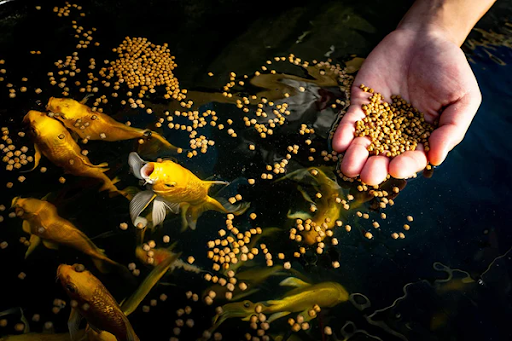Creating a vibrant aquarium is not only about selecting the right fish and maintaining a balanced ecosystem; it also involves understanding their dietary needs. Selecting the appropriate fish food is essential for the health and happiness of your aquatic pets. With countless options available, making the right choice can feel overwhelming. This guide will help you navigate through the various types of fish food, what to consider when choosing, and tips for ensuring a healthy diet for your fish.
Understanding Fish Diets
Fish diets can be as diverse as their species. Different fish have unique nutritional needs based on their size, age, and habitat. Here are the main dietary categories of fish:
1. Herbivores
Herbivorous fish primarily consume plant matter, such as algae and aquatic plants. They require diets high in fibre and carbohydrates. Spirulina, algae wafers, and vegetable flakes are excellent options for herbivores. Popular species include Tetras, Goldfish, and many types of Plecos.
2. Carnivores
Carnivorous fish thrive on a diet rich in protein. They primarily eat other fish, insects, and crustaceans. These fish need high-quality protein sources, which can be found in pellets, frozen food, and live prey. Notable carnivorous species include Betta fish, Oscars, and Piranhas.
3. Omnivores
Omnivorous fish enjoy a varied diet that includes both plant and animal matter. These fish are the most adaptable and can thrive on a mix of both types of food. A balanced diet consisting of pellets, flakes, and occasional treats like freeze-dried worms is ideal for omnivores. Common species include Guppies, Platies, and Barbs.
Types of Fish Food
1. Flakes
Flake food is one of the most common types of fish food, especially for community tanks. It is easy to use and offers a balanced diet for many species. However, flakes can break down quickly in the water, leading to waste if not consumed rapidly. Ensure you select high-quality flakes that meet your fish’s specific dietary needs.
2. Pellets
Pellets are another popular choice for many aquarium fish. They come in various sizes, making them suitable for different fish species. Pellets tend to sink or float, depending on their design, which allows you to cater to fish that prefer to feed at different water levels. Some pellets are formulated for specific fish types, ensuring they receive the right nutrients.
3. Frozen and Freeze-Dried Foods
These options offer a high-protein diet for carnivorous and omnivorous fish. Frozen foods such as brine shrimp, bloodworms, and daphnia can be a tasty treat for your fish. Freeze-dried options retain much of the nutritional value and can be stored for long periods. When using these foods, remember to thaw frozen options before feeding and soak freeze-dried foods in water to prevent fish from choking.
4. Live Foods
Live foods, such as brine shrimp, worms, or small fish, are a fantastic way to replicate a natural diet. They are particularly beneficial for finicky eaters or breeding fish. However, sourcing live food can be challenging, and it’s crucial to ensure that any live foods are safe and free from contaminants.
5. Specialty Foods
Some fish have specific dietary requirements that might not be met with standard fish food. For example, cichlids often require specialised pellets or flakes to promote vibrant colours and enhance their health. Similarly, bottom feeders may benefit from sinking pellets or tablets.
Factors to Consider When Choosing Fish Food
1. Nutritional Content
Always check the nutritional content of the fish food. Look for foods that have high protein levels (for carnivores) or appropriate carbohydrates (for herbivores). A good-quality fish food should list whole ingredients rather than fillers, ensuring your fish get the nutrients they need.
2. Species-Specific Needs
Different species have varying dietary requirements. It’s crucial to choose food tailored to your fish’s species. Researching your specific fish type will help you determine the best food for their growth and health.
3. Age of Fish
Juvenile fish have different nutritional needs than adult fish. Ensure that you choose fish food appropriate for your fish’s life stage. For instance, fry (young fish) requires finely crushed food or special fry food, while adult fish can consume regular flakes or pellets.
4. Feeding Frequency
Understanding how often to feed your fish is also crucial. Most fish do well with one to two feedings a day, but overfeeding can lead to water quality issues. Pay attention to your fish’s feeding behaviour and adjust accordingly.
5. Storage and Shelf Life
Fish food can spoil if not stored properly. Keep your fish food in a cool, dry place and ensure it is sealed tightly to maintain freshness. If the food smells rancid or has changed colour, it’s best to discard it.
Common Mistakes to Avoid
When selecting fish food, avoid common mistakes to ensure your fish thrive:
- Overfeeding: One of the most significant mistakes aquarists make is overfeeding their fish. Always feed in small amounts that can be consumed within a few minutes.
- Ignoring Variety: While a staple diet is essential, providing variety is key to keeping your fish healthy and engaged. Rotate between different food types to ensure they receive a balanced diet.
- Using Inappropriate Foods: Some people mistakenly offer poultry food or other animal feeds to fish. Such foods may lack the necessary nutrients for aquatic life and can lead to health issues. Always stick to food designed specifically for fish.
Conclusion
Selecting the right fish food is crucial for maintaining the health and vitality of your aquatic pets. By understanding the dietary needs of different fish species and offering a variety of food types, you can create a balanced diet that promotes growth, enhances colours, and boosts overall well-being.


